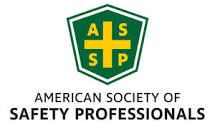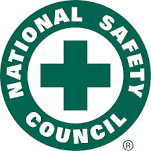Top Five Labor Law Developments for May 2021 | FIRST, VERIFY
Top Five Labor Law Developments for May 2021
1.President Joe Biden has nominated union-side attorney Gwynne Wilcox to fill a vacant seat on the National Labor Relations Board (NLRB). Wilcox is a partner at the union-side labor and employment firm Levy Ratner P.C. Among other clients, Wilcox has represented Fight for $15, the union-affiliated group that has advocated for increases in the minimum wage. As with prior NLRB nominees, Wilcox’s client list is likely to be an issue during her confirmation hearings and, if confirmed, in cases involving her former clients. If the Senate confirms Wilcox, the three Republican members of the NLRB will remain in the majority, with Wilcox and Chairperson Lauren McFerran constituting the Democrat-appointed minority. Republican Member William Emanuel’s term expires on August 27, 2021. Upon nomination and Senate approval of another Biden nominee, the NLRB majority will flip from Republican to Democrat.
2. The U.S. Department of Labor (DOL) has moved to rescind a Trump-era rule that would have increased oversight of union finances. The DOL issued a proposal on May 26 that would reverse the rule, which required unions with $250,000 in annual revenue to disclose more information about their stakes in credit unions, their trusts, strike funds, and other assets and investments. The Trump Administration promulgated the rule, but enforcement was halted in March 2021, before the deadline for unions to file paperwork with the DOL demonstrating compliance with the rule. Biden Administration officials have stated that the reporting requirement was partly duplicative of existing reporting rules. Trump Administration officials and some business leaders cited a number of financial scandals involving union officials as evidence of the need for more transparency in union finances.
3. According to a Bloomberg Law report, it takes an average of 409 days for the parties to negotiate a first collective bargaining agreement (CBA) at a newly organized workplace. The report examined 330 contracts spanning 2004 to the present to determine the average amount of time that elapses between a union’s election win being certified by the NLRB and the date a contract is signed. It examined the results by industry, with healthcare and social assistance contracts taking the longest to negotiate (528 days on average), while professional and business service contracts took the least time, roughly nine months on average (269 days). While the average for all contracts was 409 days, the median length of time between certification and a contract was 356 days.
4. A U.S. District Court ruled that a “broadly written” CBA provision compelled arbitration over the elimination of retiree health benefits, rejecting the employer’s argument that retirees are not employees and therefore are not covered by the labor agreement. Verso Corp. v. United Steel, Paper and Forestry, Rubber, Manufacturing, Energy, Allied Industrial and Service Workers International Union, AFL-CIO/CLC, No. 3:19-cv-0006 (S.D. Ohio May 6, 2021). The employer and the administrators of the union health and welfare plan announced the elimination of certain retiree health plan benefits. The union filed grievances alleging the move violated the CBA. The union moved in district court to compel arbitration, but the court dismissed the motion. Following the dismissal, the U.S. Court of Appeals for the Sixth Circuit issued its decision in USW v. LLFlex, 19-5464 (6th Cir. Mar. 24, 2021), determined a CBA’s “narrowly written clause” on healthcare benefits meant arbitration over such benefits was limited to a small category of healthcare disputes. The union moved the district court to reconsider its decision in light of LLFlex. Granting reconsideration and reversing its earlier decision, the district court found the provision in the employer’s CBA was written far more broadly than the provision at issue in LLFlex. That breadth meant the provision could be read to cover disputes over retirees’ benefits, meaning the parties could be required to arbitrate their dispute.
5. The NLRB held an employer violated the NLRA by enforcing a prohibition against recording conversations at work, but the agency did not require the employer to rescind the rule in question. AT&T Mobility, 05-CA-178637 (May 3, 2021). Applying the framework for evaluating the lawfulness of workplace rules set in Boeing Company, 365 NLRB 154 (2017), the NLRB found the employer unlawfully warned a union steward against recording a disciplinary meeting and future such recordings, activity the NLRA generally protects because it involves action taken by one employee on behalf of others. Despite finding the employer’s application of the rule was unlawful, the NLRA found the employer’s no-recording policy was lawful on its face and need not be rescinded, as the rule could be applied lawfully in the future. In so ruling, the Board overruled part of its 2004 decision in Lutheran Heritage Village-Livonia, 343 NLRB 646 (2004), which would have required the Board to automatically find the employer’s rule unlawful on its face to the extent it could be “reasonably construed” as limiting employees’ rights under the NLRA.
Source: https://www.jacksonlewis.com/publication/top-five-labor-law-developments-may-2021
You might also like

Book a Service Today
We will get back to you as soon as possible
Please try again later
Safety Starts Here!
We are available weekdays, starting at 8:00 am central.
FIRST, VERIFY Privacy Policy





